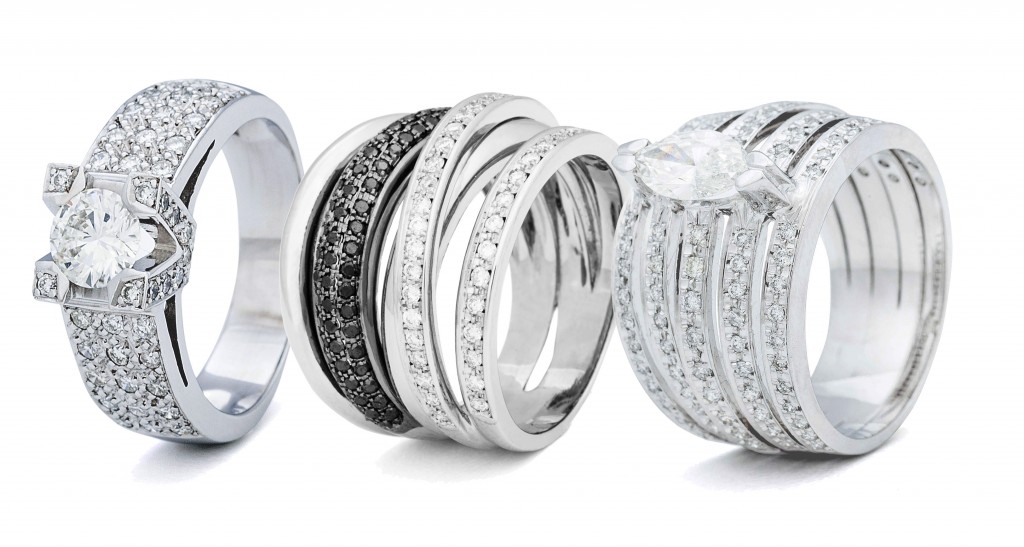The 4 c’s of diamonds
The quality of diamonds is defined by four main features: color (colour), pureza (clarity), talla (cut) y peso (carat). These are the four so-called “Cs” that determine the value and quality of diamonds.
COLOR (COLOUR)
The visual properties of a diamond are paramount because the color is the most apparent feature of a gem. There are diamonds of all colors. The most common are white diamonds, which can be completely colorless or possess a yellowish hue. The less color a diamond has, the more valuable it is.
The least common are colored diamonds, also known as fancy diamonds, which include the following colors: green, red, blue, pink, orange, yellow, brown and black. Fancy diamonds may be more expensive than white ones because they are rarer, depending on their clarity and size.

The color of diamonds is graded according to four different grading scales: the GIA (Gemological Institute of America), The Scandinavian Diamond Nomenclature and Grading Standards, HRD-IDC (International Diamond Council) and CIBJO (International Confederation of Jewelers and Goldsmiths). The most common diamond color scale is the GIA scale, which ranges from D (colorless) to Z (yellow). In this way, we can determine the color grade of a cut diamond.

*Fuente: Instituto Gemológico Español.
CARAT (CARAT)
The weight of a diamond is measured in carat or carats (1ct = 0.20 grams). The larger a diamond, the more expensive it is because crystallization is more difficult in larger sizes. However, the carat weight is not directly related to the size of the stone. The value per carat increases with the size of the diamond. Therefore, three diamonds weighing a total of 1 carat will be less valuable than one 1-carat diamond.

CLARITY (CLARITY)
Nature leaves miniscule traces in most diamonds during the crystallization process. These natural characteristics are called inclusions.
The clarity scale values determine the absence of defects or inclusions. On one hand, the inclusions can be internal or external, the fewer inclusions a diamond has, the more light that passes through it, and the higher the quality. Furthermore, defects typically occur during the handling of the stone, either during cutting or carving of the stone or during polishing.
If we look at a diamond through a tenfold-magnification magnifying glass and we see no inclusion or defect, it is known as flawless. Diamonds of this clarity are scarce and are increasingly hard to find.

CUT (CUT)
The size is a determining factor for the diamond to be able to expose its beauty and light. A diamond may lose its value if it is not properly cut. The proportions of the stone are critical when it comes to carving or cutting it, in terms of depth, width, symmetry and facets. The ideal size has the proper proportions for most of the light to be reflected from one facet to another and then dispersed through the table.
The most common types of sizes are: brilliant, oval, emerald, princess, baguette, marquise, pear and heart.




